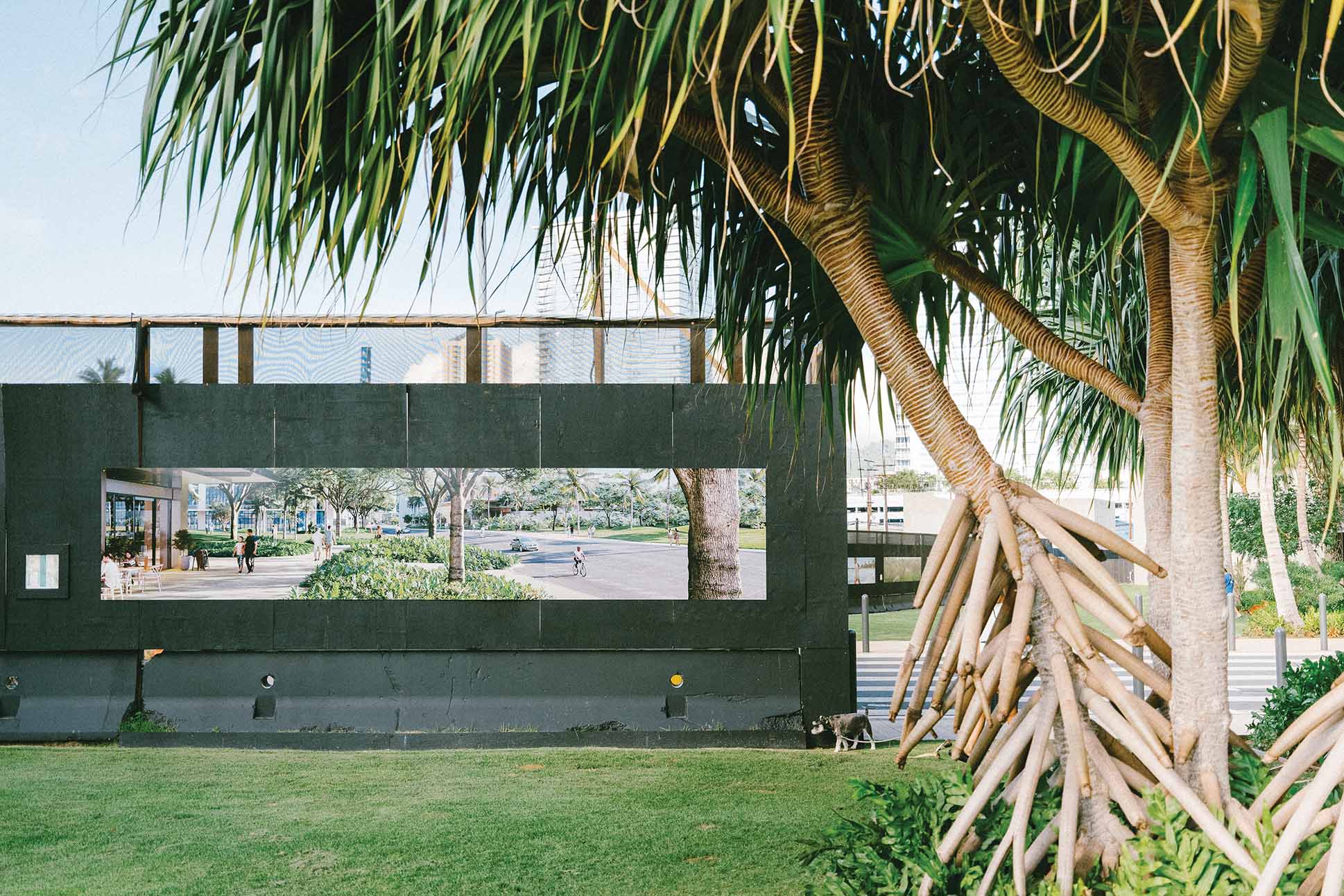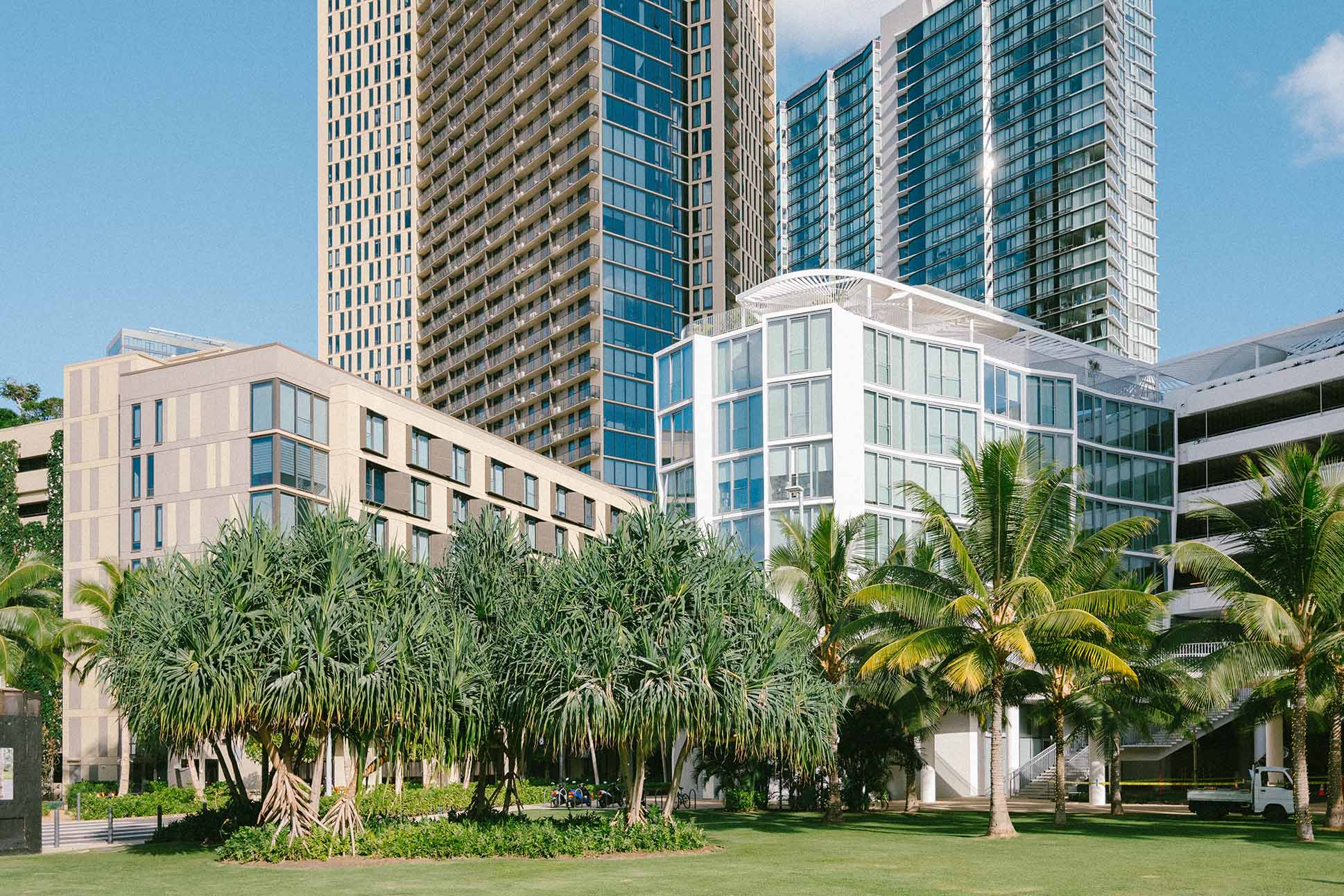In the relentless march of urban expansion, Mana and Kalehua Caceres are steadfast in their commitment to protecting and defending the bones of Hawai‘i.
Images by Lila Lee
In 1987, despite the Native Hawaiian community’s assertions that the site was a burial ground, construction commenced anyway on the Ritz-Carlton Hotel at Honokahua, Maui. The subsequent desecration: more than 1,100 human remains. This horrific event prompted Pualani Kanakaʻole Kanahele and Edward Lavon Huihui Kanahele to found Hui Mālama I Nā Kūpuna ‘O Hawai‘i Nei, a nonprofit organization dedicated to protecting iwi kūpuna, the ancestral bones of Hawaiian natives. Its members went on to repatriate and rebury over 6,000 iwi kūpuna, moepū (burial objects), and mea kapu (sacred objects), and in collaboration with other Indigenous communities, established the federal laws1 used today to protect our ancestors. Edward Halealoha Ayau2, an original member and former executive director, established the successor organization Hui Iwi Kuamoʻo in 2015.
In April 2023, I had the privilege of joining Hui Iwi Kuamo‘o on a mission to reclaim our ancestors’ stolen bones from three German museums3. Through Kalehua, I learned that tears serve as a powerful testament to our shared humanity, while Mana taught me that laughter holds the key to building resilience. It was their balanced understanding of both sorrow and joy that made clear why our kūpuna entrusted them with such important work.
As haumāna of Ayau and alakaʻi with Hui Iwi Kuamoʻo, Mana and Kalehua Caceres are the latest fruits of this geneology of ʻike. Following a couple talk story sessions with the Cacereses4, Flux learned about the latest updates, challenges, and best practices surrounding Hawaiian burial grounds and development, a critical topic to all residents of Hawai‘i.

defining ancestral remains
Mana Caceres: Everybody in your parents’ generation was considered your mākua, your parent. Everybody in the generation before that was your kūpuna. So, for us, the very definition of human remains is iwi kūpuna5, it literally is the bones of my grandparents. Thankfully, we’re living in an age now where we have revitalization of the Hawaiian language. We’re getting whole generations of our ʻōpio, our youth, who are young adults now who have grown up in our language, who have rewired their brains to think like our kūpuna.
common misconceptions
MC: One of the things we battle, as far as the construction industry itself, is that there’s a stigma that the construction project will be terminated. So, we have a lot of open dialogue on projects that we are involved in and it’s basically trying to teach everybody what they’re missing. We’ve had instances where iwi is found on construction sites where the people are trying to hide it because if they find iwi they think they’re going to get fired or something. So, it’s not like they’re trying to hide it to be ‘ino (immoral, disrespectful).
They’ll try and dig fast sometimes so that the archeologists and the other monitor6 won’t be able to see if iwi is present. The worst case scenario is they’re digging with no monitor, or by the time a kūpuna is found, they don’t know where it originated. Some of these construction sites, by the time we’re contacted there are huge piles of dirt that they’ve had on site for months, which then requires an investigation that is going to take months because now they have to find out where on-site that dirt came from. We’ve seen cases where the state has required half a dozen to a dozen archeologists sitting there with screens, screening truckloads of dirt, trying to find all the kūpuna because nobody was there when they were digging.
when iwi are found
MC: If iwi kūpuna are found, the entire job doesn’t get shut down. When bones are found and the process is stuck to, you’re looking at something as short and as simple as a 24-hour shut down of a 20 foot area7. Finding a kūpuna as carefully as you potentially can, pays off in the long run, not only for the kūpuna because it’s safer and it’s less impactful, but for the developer also. The safer you go, the safer it is. The safer and more careful you do the excavation, obviously the kūpuna is going to be safe. Sometimes we are able to find kūpuna before the machines even touch them. If we know what kūpuna was buried, like the material or the layer of dirt that they’re associated with in that area, once we reach that depth or we see that type of dirt, we usually go in and we check with our literal hands. And if that’s the case, then you can find kūpuna before anything touches the kūpuna.

a relationship-based methodology
For us, we know it’s about relationships. That is our value system. As Hawaiians, we’re trying to accept everybody at their value and treat them respectfully. Because when we do, we model the way we want our ancestors to be treated. And we want those we work with to know that if we show them respect, they can show our ancestors respect.
Kalehua Caceres: The way we approach anything ‘ohana-related, our business, or any endeavors that we are partaking in, is that we use the ceremonial protocols for everything. It is super important for us to recognize people’s kūlana (rank or title) and kuleana.
We want people to know that they’re more than just a company to us. Even if we don’t agree sometimes, we recognize they’re real people doing real jobs. Maybe they struggle like us, maybe they don’t. But if we want a better Hawai‘i, not just for kūpuna, but for all of us, that’s what it’s going to take: changing people’s mindsets. And if we get to be at the table in any capacity, that’s what we always do. For me, that’s why Hale always says that you got to bring some ‘ike (accurate knowledge) to the table. Which is different than manaʻo (thought, opinion) or maopopo (understanding). If you can bring ‘ike to the table, at least that’s a starting place, right?
interpretation of law
MC: When you read the rules, it’s quite clear. When there’s a find of iwi kūpuna, you’re supposed to look at it from a lens of, “We’re preserving the kūpuna in place.” It’s supposed to be preserved in place until you absolutely have proven that it can’t be done. If we had people in positions of authority at the state level that’s in charge of monitoring the State Historic Preservation Division8 or Department of Land and Natural Resources, and apply the rules as they were intended to be applied9, kūpuna would be safer tomorrow. It’s as quick as that. It’s as easy as just having somebody there that’s looking at it from an angle of, “OK, let’s protect kūpuna today.” Not “let’s protect the developer,” not “let’s protect the building.”
KC: We’ve been in burial council meetings and they’ll be like, “In the spirit of the law…,” and Hale will say, “No, that is not the spirit of the law. I wrote it. I can tell you what it meant.”

relocating kūpuna
KC: Sometimes that’s the only alternative that we have to keep them safe. There are times when we agreed or we advocated for them to be moved from one place to the other, but we make those decisions knowing the gravity of it and taking on the responsibility. If we cannot get a developer to agree to ways to keep the kūpuna safe, then the safest thing is to move them to another location that’s safer. They’re under all the roads. They’re under all the buildings. Chances are those are the ones you never find. They’re the safest ones right now. So you have to weigh the risks and the benefits. And for us, we know the risk, so we just pule (pray). We let the kūpuna know every step of the way.
MC: This is Hawaiʻi. Everywhere you go, you’re going to have kūpuna. Is it OK to leave my grandpa’s iwi under a sewage line that might break? Is it OK to leave my grandpa’s iwi under a road? They were there before the road, now there’s a road. Is it more Hawaiʻi, more Kanaka, to dig them out because the road is there? Or leave them alone where they were purposely planted? Those kinds of questions are a little bit easier if you’re looking at it from the lens of, “That’s my grandpa’s iwi.”
This interview has been edited for length and clarity from two conversations.
1 The Native American Graves Protection and Repatriation Act became law on November 16, 1990. NAGPRA requires federal agencies and institutions that receive federal funding to return Native American cultural items to lineal descen- dants and culturally affiliated American Indian tribes, Alaska Native villages, and Native Hawaiian organizations. The act also estab- lishes procedures for said items’ inadvertent discovery on federal or tribal lands.
2 Ayau was the first manager of the Burial Sites Program at the State of Hawai‘i Historic Preservation Division that formally established the island burial councils, and was the principal drafter of the State laws that remain in use to this day.
3 Two hui repatriated a total of 55 iwi kūpuna, 30 lauoho (hair of the head), and seven moepū from Übersee-Museum Bremen, Stuttgart State Museum of Natural History, Albert Ludwig University of Freiburg, and others.
4 They also operate ‘Ohana Kūpono Consulting, a family owned cultural consultation firm that special- izes in providing highly qualified cultural monitors and cultural monitor training.
5 Hawai‘i state law defines “inadvert- ently discovered remains” as remains that are unexpectedly exposed or disturbed in a place not known to be a place of burial. “Remains” being all or part of a dead human body or corpse, exclusive of ashes, cremated remains, or waste.
6 Safeguarding iwi kūpuna hinges greatly on the quality of the archae- ological reports prepared during the planning stages of any development. If a permitting agency determines a project may affect burial sites, a “qualified archaeologist,” who must have a graduate degree in the field or related area and years of ex- perience, conducts an archaeolog- ical inventory survey. When done properly, they are an excellent tool to prevent the disturbance of iwi kūpuna by construction.
7 Reporting a burial site distur- bance is required by law, according to DLNR’s website, and severe penalties could result when SHPD is not notified of such disturbance.
8 According to the DLNR website, SHPD is comprised of three branches: Architecture, Archae- ology, and History and Culture. Together they collectively strive to preserve and protect Hawaiʻi’s historic identity.
9 A 2021 op-ed by Kēhaunani Abad and Edward Halealoha Ayau in Ka Wai Ola contends that for the past 25 years SHPD has chronically failed in this regard, mentioning its inability “to produce consistently rig- orous, timely reviews of reports required of those undertaking projects, resulting in projects going forward that should have paused for more careful study and community involvement.”

